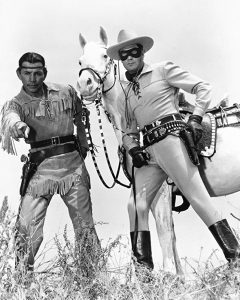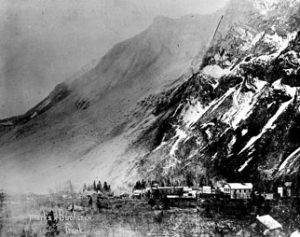The Characters of Green Grass Running Water
This blog post will be information and hyper-links to my research on the characters of King’s novel Green Grass, Running water, from pages 90-110. I’m using a digital edition, but the Page starts from the line “Maybe we should call him Little Beaver or Chingachgook or Blue Duck.” (King p.90) And ends on line “There was a bottle in his hand, and he was naked from the waist down, his…” (King p.110).
Characters:
First Women
She is a primary character from North American Indigenous mythology. She features in Earth Diver creation stories, with her falling from the sky and that is generally followed by the creation of Turtle Island. As mentioned by Flick (1994), when trying to start his story, Lone Ranger tries many opening lines which doesn’t ever feel right to him or his companions, until he starts by mentioning the First Woman in Cherokee.
Ahdamn
The First Women’s companion in the novel, his name is a phonetic reference, heard the most clear when read out loud, to Adam from the Genesis story of the creation of man and the Garden of Eden (Flick pg. 147). In this part of the story, it is the First Women who makes the garden in which she meets Ahdamn. Another irony is that they choose to leave the garden and feel rather freed in doing so, leaving GOD behind in the garden. An interesting irony and switch from the traditional Christian story.
Coyote
Is a trickster figure from North American First Nations mythology. He is part of the race of the First People, mythic creatures who lived before humans existed. They’re very powerful creatures that created the world we live in, human life and culture. But they were capable of human emotion and flaws, such as being wise or stupid, brave or cowardly, etc. (Flick p.147). In the story Coyote is curious, a bit lazy, but knowledgeable and mischievous. Much different from the slandered story of the Christian God and the story works hard to highlight these differences in these mythical figures.
http://https://www.youtube.com/watch?v=eAKHGe6x8n8
Dr. Joseph Hovaugh
His name is a play on the name Jehovah, from Jehovah’s Witnesses, with H making the ‘j’ sound that is found in many Spanish words (Flick p.147). He’s the doctor in charge of running the asylum, Babo’s “Crazy Hospital.” The very hospital the four Indian elders escape from. Though they weren’t a threat to anyone, the four old Indians were locked up in the hospital, but they apparently repeatedly make their escape from their prison. In the novel Dr. Hovaugh main interested is his garden, a light reference to his name and obsession with the Christian religious outlook on life. His role in keeping the elders in a crazy house is also reflective of the actions of Christian missions to educate the North American Indigenous populations. He cares more for his garden, God/religion, than the actual wellbeing of the people he must tend to, one of King’s more solid critiques.
Sergeant Ben Cereno
A character in Melville’s story “Benito Cereño.” In which a mutiny of black slaves occurs on board a ship, led by a black barber Babo, with the Spaniard Cereno being the captain of the ship (pg. 146). We see both characters in King’s story, with Cereno being the police officer investigating the case of the missing Indigenous elders from the hospital. He interrogates Babo, another reference to the story, who asks him if his name is Italian or Spanish, and who he mistreats by referring to her with racial slurs. His mistreatment of Babo causes problems for his investigation that could have been avoided if he had treated her better, a critique found in the original text as well.
Lone Ranger
Is a reference to the fictional character of the same name, who is a Masked hero  from the Western Genre of media. He is a heroic Texas ranger, that journeys with Tonto, his faithful Indian companion. He has been in many forms of popular media and is well know. From Western books, a radio serial from1933 by Fran Striker, a 50’s television series, and many movies. The more famous among them being: The Lone Ranger (1938) and (2013), The Lone Ranger Rides Again (1939), and The Legend of the Lone Ranger (1981) (Flick p. 141).
from the Western Genre of media. He is a heroic Texas ranger, that journeys with Tonto, his faithful Indian companion. He has been in many forms of popular media and is well know. From Western books, a radio serial from1933 by Fran Striker, a 50’s television series, and many movies. The more famous among them being: The Lone Ranger (1938) and (2013), The Lone Ranger Rides Again (1939), and The Legend of the Lone Ranger (1981) (Flick p. 141).
Though this interpretation of the idea of the First Nations people of North America, in the form of Westerns, we find King giving the name of the Texan ranger to his Indigenous character. Who ironically is a character that has been made famous and profited off a certain cliché characterization of Indigenous people. And the 2013 movie of its name is a testament to it’s lasting impact on modern cinema, though its poor ratings on Rotten Tomatoes is less so a good indication of its past history.
Ishmael
A character in the novel Moby Dick by Herman Melville, and is the narrator of the  tale. As the sole survivor of the crew after the Moby Dick destroys the Pequod, Ishmael survives by staying afloat on Queequeg’s coffin. His name is also biblical reference, Gen.15.-15.
tale. As the sole survivor of the crew after the Moby Dick destroys the Pequod, Ishmael survives by staying afloat on Queequeg’s coffin. His name is also biblical reference, Gen.15.-15.
Robinson Crusoe
The main character and hero of Defoe’s novel, Robinson Crusoe (1719). Which can be argued to be the first English Novel and the most famous desert island narratives. He is a shipwrecked mariner, who survives because of his ingenuity and his story is one of finding strength in spirituality because of adversity. In his story he is also aided by Friday, a “savage” he Christianizes after he rescues him from a group of Cannibals.
In King’s novel Crusoe is one of the four elders and through this name, King once again uses irony to help reclaim the idea of who and what kind of person can be the main character to a story. Using the name of such a famous and well known character
Alberta Frank
 Is our main female character in King’s novel and she portrays those of First Nation decent who are still connected to their cultural roots and wish to keep them alive. Her name suggests a reference to the province of Canada, and as Flick mentions, she herself is a frank person. It could also be a reference to the small town Frank, Alberta, which rests on the Turtle River. In 1903 a rockslide hit the town causing a major disaster. The date of 1903 is one mentioned by Dr. Hovaugh, so it has some credit.
Is our main female character in King’s novel and she portrays those of First Nation decent who are still connected to their cultural roots and wish to keep them alive. Her name suggests a reference to the province of Canada, and as Flick mentions, she herself is a frank person. It could also be a reference to the small town Frank, Alberta, which rests on the Turtle River. In 1903 a rockslide hit the town causing a major disaster. The date of 1903 is one mentioned by Dr. Hovaugh, so it has some credit.
Reference:
‘Adam and Eve | Biblical Figures | Britannica’ <https://www.britannica.com/biography/Adam-and-Eve-biblical-literary-figures> [accessed 16 March 2020]
‘Benito Cereno | Short Story by Melville | Britannica’ <https://www.britannica.com/topic/Benito-Cereno> [accessed 16 March 2020]
‘Canlit.ca 161-162-ReadingFlick.Pdf’ <https://canlit.ca/wp-content/uploads/2015/01/canlit161-162-ReadingFlick.pdf> [accessed 16 March 2020]
‘Coyote | Mythology | Britannica’ <https://www.britannica.com/topic/Coyote-mythology> [accessed 16 March 2020]
Coyote and Raven, American Tricksters: Crash Course World Mythology #22<https://www.youtube.com/watch?v=eAKHGe6x8n8> [accessed 16 March 2020]
‘Frank Slide: Canada’s Deadliest Rockslide | The Canadian Encyclopedia’ <https://www.thecanadianencyclopedia.ca/en/article/frank-slide-feature> [accessed 18 March 2020]
‘Jehovah’s Witness | Religion’, Encyclopedia Britannica<https://www.britannica.com/topic/Jehovahs-Witnesses> [accessed 17 March 2020]
‘Lone Ranger | Fictional Character | Britannica’ <https://www.britannica.com/topic/Lone-Ranger> [accessed 16 March 2020]
‘Robinson Crusoe | Overview of Novel by Daniel Defoe’,Encyclopedia Britannica<https://www.britannica.com/topic/Robinson-Crusoe-novel> [accessed 9 March 2020]
‘The Lone Ranger (1949-1957)’, IMDb<https://www.imdb.com/title/tt0041038/mediaviewer/rm3744535552> [accessed 9 March 2020]
‘The Lone Ranger (2013) – Rotten Tomatoes’ <https://www.rottentomatoes.com/m/the_lone_ranger> [accessed 18 March 2020]
‘Moby Dick | Summary, Interpretation, & Context | Britannica’ <https://www.britannica.com/topic/Moby-Dick-novel> [accessed 18 March 2020]
‘Turtle Island | The Canadian Encyclopedia’ <https://www.thecanadianencyclopedia.ca/en/article/turtle-island> [accessed 7 February 2020]
Hi Nargiza!
You mention the lasting impact of the Western genre and how media has continued to perpetuate harmful sterotypes about Indigenous people, and I was wondering why you think that is? Do you think it is because of some sort of nostalgic inability to let go of these popular culture characters and figures? And lastly, do you think that these harmful depictions will stop appearing in films/media altogether anytime soon as more conversations about discrimination and racism in Canada are taking place?
Thanks!
Indra
Hi Nargiza,
I enjoyed reading your blog post! Your overview of the characters and symbols are interesting and concise.
Regarding the pop culture references of the name of the four “Indians,” how do you think King is playing with the historical connection of these characters to Indigenous friends or “side-kicks”? Why do you think King never mentions to Indigenous characters of these settler cultural narratives?
Georgia 🙂
Hi Nargiza! I liked how organized and easy to understand your writing was. Wow that’s very interesting that Coyote was part of the race of people before humans. Indigenous stories are fascinating in how different their tone and subject matter is compared to Western religious stories. I’ve been wondering, what do you think is the connection between Alberta, Charlie and Lionel?
Hi Nargiza, I love how you included the screen grab of the horrible rating for the 2013 movie rendition of the Lone Ranger where Johnny Depp plays the sidekick Tonto. I have never seen an episode of the original Lone Ranger nor did I was the 2013 film adaptation, although I do remember cringing through the previews while watching them in the movie theatre that year. Interestingly there was heated debate for and against Depp portraying Tonto as Depp claimed a sliver of Indigenous heritage. Depp is among many who have claimed Indigenous heritage in an attempt to placate critics of his cultural appropriation. Other famous people include Cher, who received backlash for her number one hit song “halfbreed” where she laments the tribulations of being half Cherokee (1/16th allegedly), as well as American Senator Elizabeth Warren who released the results of a DNA test that indicated a similar amount of Indigenous heritage and used that information in an attempt to appeal to the American Indigenous voters. Considering that Kings Green Grass Running Water came out in 1993, and the Lone Ranger films debuted in 2013 indicates to me that unfortunately little has evolved in the broader understanding of Indigenous identity in America. Do you think it was King intent to race-swap these “iconic” characters as an educational device in the readers understanding of Indigenous representation?